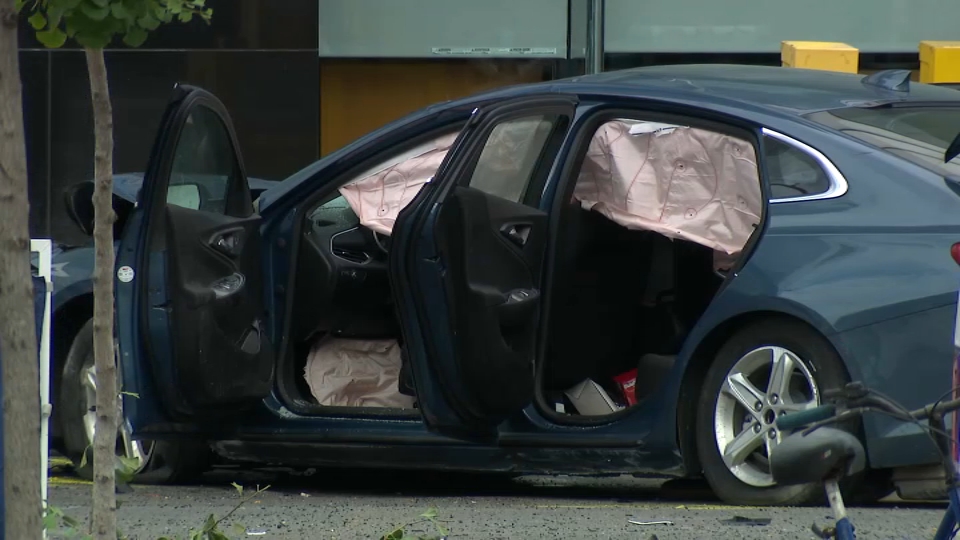Some 80 years ago this month, aboard the Essex-class fleet carrier USS Lexington (CV-16) in the Pacific: A great period Kodachrome of The “Fighting Airedales” of Fighting Squadron Sixteen (VF-16)’s Commanding Officer, LCDR Paul Douglas Buie (USNA ’33), (center) briefing his pilots for an upcoming mission, during the Gilberts operation, November 1943.

Photographed by Commander Edward Steichen, USNR. Official U.S. Navy Photograph 80-G-K-16053, now in the collections of the National Archives.
The above are (l-r): ENS WM. J. Seyfferle, LT(JG) A. R. Fizalkowski, LT(JG) A. L. Frendberg, LCDR (future RADM) Paul D. Buie (Commanding Officer), ENS John W. Bartol, LT(JG) Dean D. Whitmore, LT(JG) Francis M. Fleming, LT(JG) WM. C. B. Birkholm, LT(JG) Sven Rolfsen, Jr. plus two others not named in the group to the right of LCDR Buie. A F6F-3 Hellcat fighter is behind them. Note flight gear, markings on helmets, and life vests. The pilot at left wears an M1911 .45 caliber pistol on his belt in a leather flap holster just in case he was to become a member of “The Walking Club.”
The fifth warship (and second WWII flattop) to carry the name, Lady Lex had originally been laid down in July 1941 by Bethlehem Steel in Quincy in July 1941 while America was at an uneasy peace, with the intention she would be named USS Cabot. Instead, on 16 June 1942, just days after CV-2 was lost at the Battle of the Coral Sea, she picked up the mantle and was commissioned on 17 February 1943.
Her inaugural airwing would be Carrier Air Group 16, which had only been established on 16 November 1942 with all-new squadrons (VF-16, VT-16, VB-16, and VS-16). CAG-16 would remain with Lex until July 1945 and would earn their keep in November 1943.
As noted by DANFS:
After Caribbean shakedown and yard work at Boston, Lexington sailed for Pacific action via the Panama Canal, arriving at Pearl Harbor on 9 August 1943. She raided Tarawa in late September and Wake in October, then returned to Pearl Harbor to prepare for the Gilbert Islands operation. From 19 to 24 November, she made searches and flew sorties in the Marshalls, covering the landings in the Gilberts. Her aviators downed 29 enemy aircraft on 23 and 24 November.

A U.S. Navy Grumman F6F-3 Hellcat from Fighting Squadron VF-16, Carrier Air Group 16, goes down deck for take-off of the aircraft carrier USS Lexington (CV-16) during the Gilbert Islands campaign. Photographed by Commander Edward Steichen (U.S. Navy photo 80-G-471179)

Pilots of VF-16 celebrate after shooting down 17 Japanese aircraft in the Marshalls & Gilberts area on 23 November 1943. They are (l-r): Ensign WM. J. Seyfferle, Lieutenant Junior Grade A. R. Fizalkowski, Lieutenant Junior Grade A. L. Frendberg, Lieutenant Commander Paul D. Buie (Commanding Officer), Ensign John W. Bartol, Lieutenant Junior Grade Dean D. Whitmore, Lieutenant Junior Francis M. Fleming, Lieutenant Junior Grade WM. C. B. Birkholm, Lieutenant Junior Grade Sven Rolfsen, Jr. plus two others not named in the group to the right of Lieutenant Commander Buie. Planes are F6F-3s. Photographed by Commander Edward Steichen, USNR. 80-G-44598
Lexington received the Presidential Unit Citation and 11 battle stars for World War II service, served off Cuba during the Missile Crisis with CVG-3 aboard then, at the end of 1963, tapped out sistership USS Antietam (CV/CVS/AVT-36) as the aviation training carrier at Pensacola, a task she would keep up for the rest of the Cold War, remaining the last of her class on active duty– and the final wooden decked carrier in the U.S. Navy.
She logged more than 493,000 arrested landings between 1943 and 1991.
She is preserved in Corpus Christi, where she has rested since 1992, outliving CAG/CVW-16 by two decades and VF-16 by four.


















